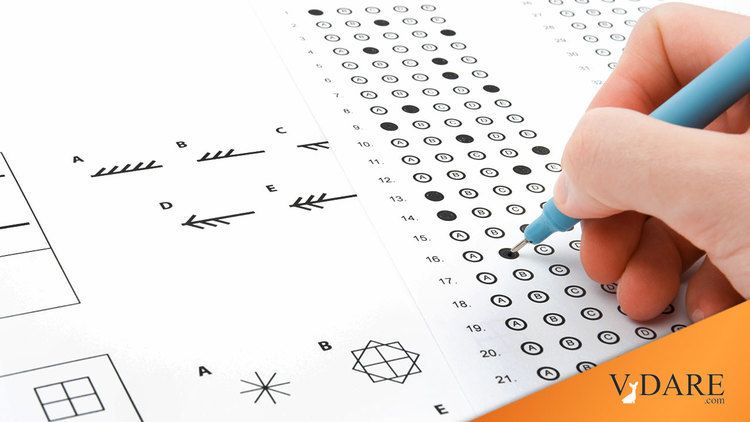
Multiple Intelligences
By Steve Sailer
09/18/2007
I've always been sympathetic toward Howard Gardner’s popular Multiple Intelligences theory. I pointed out to him once that if there really are seven or eight separate intelligences, then it’s much less likely that all races have all the same intelligences than if the g factor was dominant. For example, we see that the two sexes have extremely similar g factors on IQ tests, which is hardly implausible purely from a stochastic standpoint since there are just two data points: male average IQ and female average IQ. But if we have, say, four or five racial/ethnic groups and seven or eight Gardnerian intelligences, that’s 28 to 40 different datapoints, and no way, no how are 28 to 40 different data points all going to come out the same in the real world.
He agreed.
But, I’m also frustrated by how little development has been done on his theory, by him or by others.
Reading his books, it’s pretty clear that, while he’s a bright, interesting guy, he pretty much made up his categories off the top of his head.
For example, if I recall correctly, he lumps agile athletes together with guys who are really good at working on their cars as all possessing high "kinesthetic" intelligence. The problem is that if you stop and think about the cliques at your old high school, you'll note that there was little overlap between the jocks and the greasers. The gearheads tended to be a little uncoordinated and the football heroes were more into buying cars than fixing them. So, while I’m perfectly happy to agree that there are multiple intelligences, I’m don’t think Gardner’s term "kinesthetic" is actually pointing to a real single thing. Football star LaDainlian Tomlinson and car-fixer-upper Jesse James (Sandra Bullock’s husband) may well both possess unusually gifted cognitive talents, but I strongly doubt they are the same talent.
If anybody is actually interested in quantitatively investigating multiple intelligences, the military’s ASVAB test would offer a good source of data. The ASVAB, introduced in the 1970s, is a superset of the military’s traditional AFQT enlistment IQ test. To the four highly g-loaded AFQT subtests, the military added six more specific, less g-loaded subtests. For example, one was on auto repair, which would be relevant to Gardner’s kinesthetic category. Here are the ten subtests as of 1980:
- * general science
- * Arithmetic reasoning
- * word knowledge
- * paragraph comprehension
- * numercial operations
- * coding speed
- * auto and shop information
- * mathematics knowledge
- * mechanical comprehension
- * electronics information
We have a fantastic nationally representative National Longitudinal Study of Youth sample of about 12,000 people who took the military’s ASVAB as young adults in 1980, and social scientists have been following the course of their lives with close interest ever since. Most famously, Herrnstein and Murray correlated what they were doing in 1990 against their AFQT IQs in 1980 to furnish most of the novel material in The Bell Curve. But the other six subtests, when correlated with the NLSY demographic data, might provide some clues as to what multiple intelligences actually exist.
